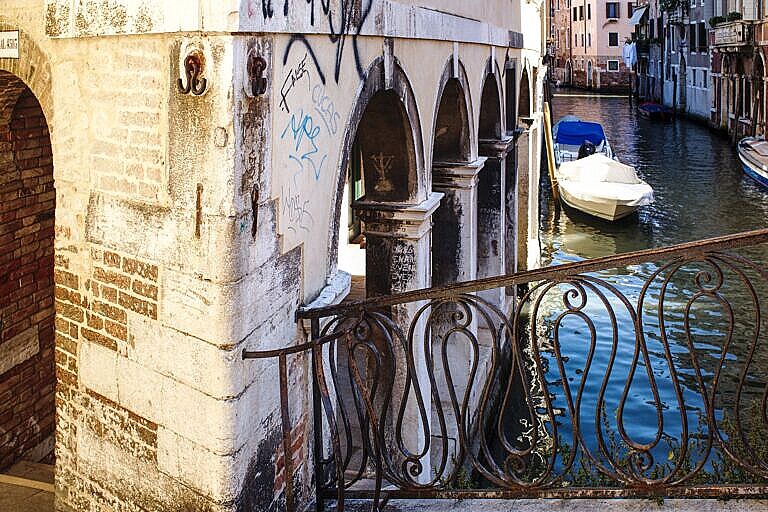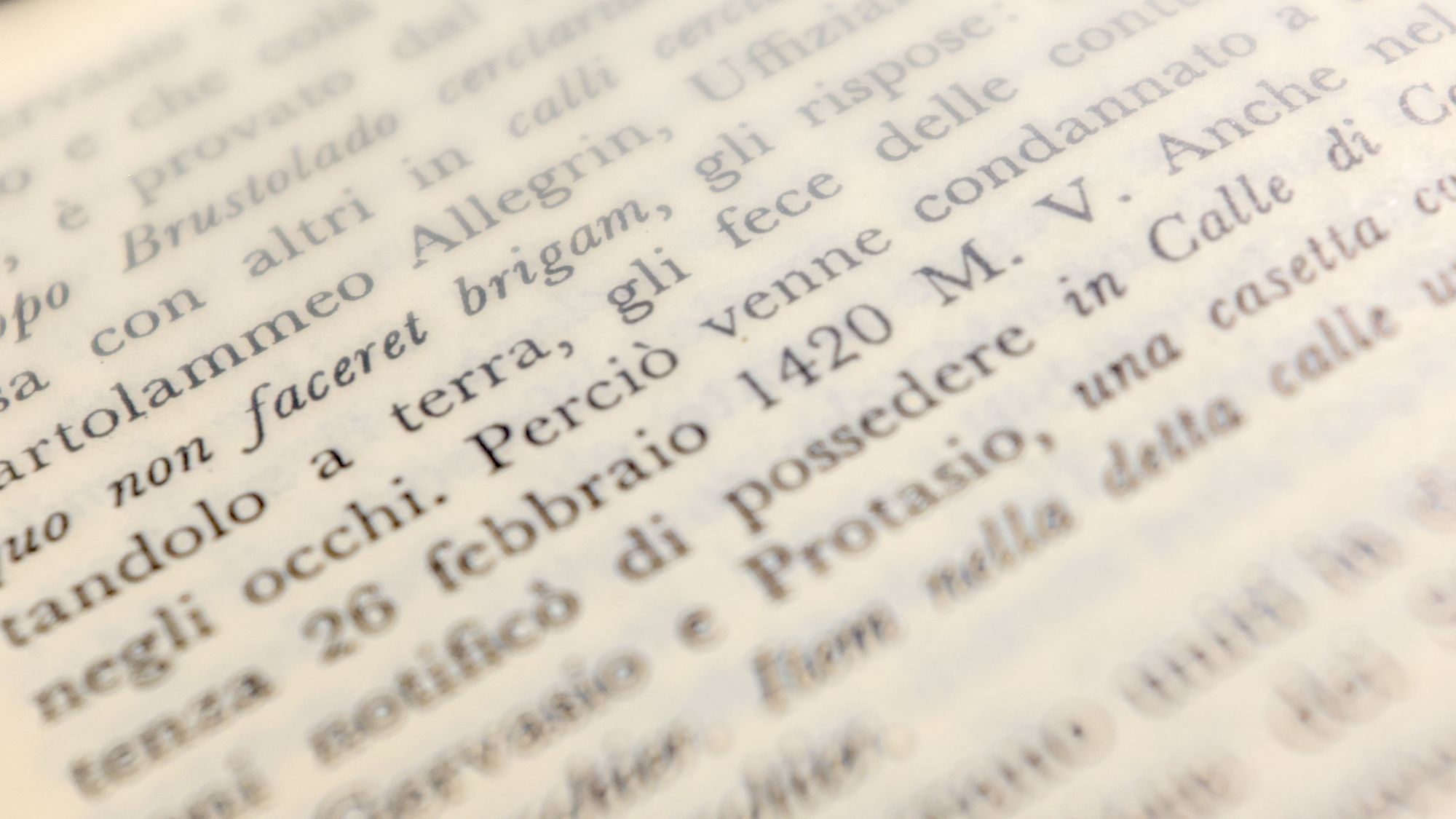
Close to San Canciano there’s a bridge which the Venetians often refer to as ponte dei squartai, or the “bridge of the hung and quartered”. It is not the official name, however. Whenever the locals pass the bridge,they often touch a couple of double hooks mounted high on the wall, to ward of evil.
The age old custom has left deep marks in the wall where the hooks touch it.
Popular belief is that when criminals and traitors, when hung and quartered in the middle ages, one quarter of the body would be hung on these hooks as a warning to others.
There is no documentary evidence whatsoever for this legend, but it doesn’t make any difference. This common belief transcends evidence. Arguing too forcefully for what is historically documented can easily break a friendship with a true believer.
So, what is documented?
Unfortunately, regarding the mystic hooks on the wall, there is very little documentation. They are not mentioned anywhere. If they ever had any special meaning, it has left no trace in surviving documents.
On the other hand, we do know a bit about what happened to the bits and pieces of the corpses of executed criminals.
A document in the State Archives says:
in quator quartis, unum quorum appendatur…super furcha quae fiat in medio dictarum duarum colomnarum, alterum quartum suspendatur ad unam de Mestre, in loco solito, tertium quartum suspendatur super furchis post sanctum Georgium, et quartum suspendatur ultra sancta Martam ad viam qua itur Paduam
Archivio di Stato, Senato, Misti, reg. 8, c.106r. — from Traverso (2000)

This means that the four parts of the bodies of hung and quartered criminals would be put on display in four different places: close to the gallows between the two columns at St Mark’s, on the ‘usual spot’ towards Mestre, on a gallows behind San Giorgio and beyond Santa Marta on the road to Padova.
The last three places are in the lagoon, along the main canals leading to and from the city. One is in the direction of Mestre; another on the canal from Chioggia and the sea; and the last towards Fusina and Padova. These places still exists, but there are no traces of the wooden gallows that once adorned the lagoon.
There is no mention of the mysterious hooks at San Canciano. It is not a very likely place to expose decomposing body parts, as it runs completely counter to everything we know about how the ancient Venetians reasoned about public health and well being.
What were the hooks for, then?
We don’t know for sure. However, there is one theory that I find rather convincing.
Before the first vaporetti appeared in Venice in the late 1800s, passage to and from Murano was with traghetti, that is, rowed Venetian boats.
The ‘bus stop’ where people would wait for the boat, was at the fondamenta under a sottoportego, just behind where the hooks are mounted. Graffiti, made by passengers waiting for the boat, cover many of the columns.
A possible, and I my view likely, purpose of the hooks would be to hold torches, illuminating the area at night time or in the winter, because crime was an issue.
Before the introduction of street lighting in Venice, the alleys were very dark at night and during winter.
A busy spot like the waiting area for the boat to Murano would be a lot safer with a bit of light from a couple of torches.
Related articles
- When you could hang for wearing a fake beard
- A Venetian Law
- Long live the doge
- Runes in Venice
- An ancient game board in Venice
Bibliography
Traverso, Chiara. La scuola di San Fantin o dei Picai : carità e giustizia a Venezia. 2000.





Leave a Reply